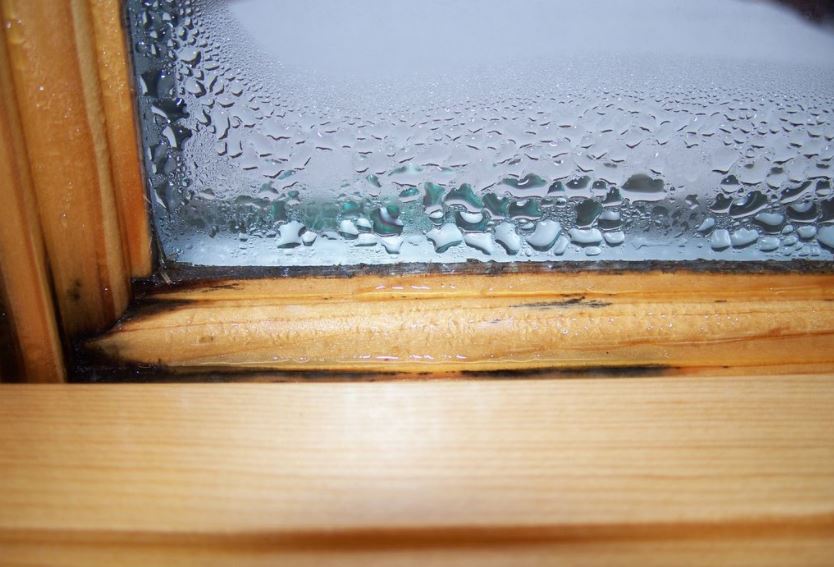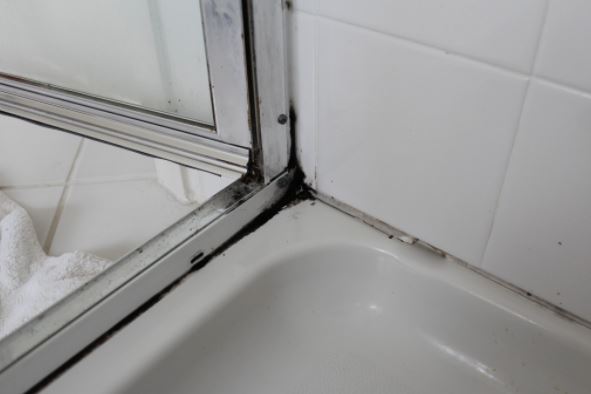Top 10 Facts about Moisture and Your Home

Moisture Fact #1 – Homes Produce a Large Amount of Moisture
On a regular basis, our homes produce a large amount of moisture. This may be a surprise to some, but in one way or another, water is practically involved in everything we do. When we cook dinner at night, water in our vegetables heat up and rise into the air as steam; not to mention the steaming hot showers that we enjoy every morning or night. These relaxing hot showers produce a massive amount of steam that is expelled into the air throughout our home. Even washing the dishes after a satisfying meal produces even more humidity in our home. Other sources of humidity in our homes can even come from soil moisture that leaks into our basement or crawl spaces.
Moisture Fact #2 – Too much Humidity is a Health Hazard
Even though humidity receives a bad reputation, it is actually very important for our health. A perfect level of humidity can leave us feeling healthy and hydrated. However, too much humidity presents some serious health risks. Microscopic organisms and mold spores thrive in humid areas that eventually could create a toxic environment. Once mold is visible in our homes, the existing mold will expel even more spores that will be spread throughout our home. Toxic air filled with mold spores can result in serious respiratory issues, especially for those who already suffer from the effects of asthma.
Moisture Fact #3 – Too low of Humidity is also a Health Risk
For individuals who strive to reduce the risk of mold by removing all the humidity in their home, it is important to understand that too low of humidity levels is equally damaging to health. Low air humidity causes skin to dry out, lips to chap, and eyes to redden and hurt. Additionally, dry air passing through the nose causes the sinuses to not function properly, which could lead to congestion problems and possibly Sinusitis. Maintaining a healthy air humidity level is essential for preventing problems such as these.
Moisture Fact #4 – Mold and Bacteria Thrive in Humidity

Once mold takes root into our home, it is extremely difficult to completely remove it. Spores produced by mold become circulated around our home and could take root anywhere. Based on a study by the National Institute of Environmental Health Sciences, humidity levels of 60% and higher drastically increase the growth rate of mold by up to 5X the average rate. Maintaining a humidity level lower than 50% is ideal for regulating mold growth. Additionally, organisms such as dust mites love warm temperatures (typically between 74-80 degrees) and humidity levels of 65% and higher. Fortunately, it is also reported that dust mites experience a rapid reduction in growth and eventually die as soon and the humidity levels drops below 60%. In order to reduce these risks, it is important to maintain the cleanliness of air conditioners and other humidifying contributors.
Moisture Fact #5 – Excess moisture Destroys Electronics and Other Items
Have you ever noticed that electronic companies do not offer warranties in certain states and regions of the world? That is because humidity is a major enemy to electronic components! Since air humidity is widespread, electronic boards are always at risk of exposure. Excessive moisture on electronic boards can corrode the contacts between components and reduce insulation resistance. The result of humidity damage will cause shortages and operation malfunctions. In addition to electronics, excessive moisture also ruins household items that consist of leather and wood. Over time wood and leather can warp and potentially deteriorate. No one wants to pay for new base boards or even new leather couches when it could have been easily avoided. In order to combat the adverse effects of humidity, it is necessary to pay close attention to the levels building in your home.
Moisture Fact #6 – Winter is When Our Homes have the Most Humidity
The wintery months often bring dry, cold air that dries out our skin and lips. As a result of the cold weather, we turn on our heaters and try our hardest not to let the cold air in. However, it may be a surprise to some that the wintery months are when our homes build up the most humidity. This is primarily due to the fact that we strive to keep every window and door closed to keep the heat in. Unfortunately, we also force the humid air in our homes to stay trapped inside rather than letting it out. In addition to the humidity produced by sinks and showers, snow and rain are often tracked into our homes.
Not only is the consistent entrapment of humid air harmful to our home, another effect of the wintery months make a humid situation even worse. As the warm, humid air reaches walls that are exposed to the cold air, the humidity in the air quickly condensates and develops beads of water on the wall. Consistent wet walls with warm humid air are the prime condition for mold and mildew to grow. If the humidity levels are not appropriately taken care of, the health within your home becomes threatened.
Moisture Fact #7 – Ventilation is necessary in Every Home
Since our homes are a humidity trap, it is essential that there is adequate ventilation in all areas of the home; most importantly in the kitchen and bathrooms. In California, the ASHRAE code 62.2 requires all bathrooms to have at least a 50 CFM fan to move stagnant air. However, some sort of ventilation in any bathroom is highly recommended since they are a main source of air humidity. With proper ventilation, toxic and humid air can be removed to create a safer environment for our families to live in.
Moisture Fact #8 – Humidity is Unavoidable
No matter how hard we try, humidity will always exist in our home. As long as we take showers, wash dishes, and let in the outside air, our homes will always have a certain level of humidity. In some areas, relative humidity is a major issue. Typically, the warmer the air is, the more water it can hold. For individuals who live in hot areas with large amount of water, the relative humidity level will be significantly higher than other places. As a result of this air cooling, the water in the air will condense and form drop lets. As mentioned previously, the effects of condensing water in our homes can warp our furniture an exponentially increase the growth of mold.
Moisture Fact #9 – The Ideal Indoor Humidity Level is between 30-40%
The ideal humidity level for indoors is often debated. However, a large majority agree that a humidity level between 30-40% is best. If the humidity level deviates slightly above or below the recommended value for a short period of time, most individuals will not feel the difference. A humidity level between 30-40% is just enough to leave our skin hydrated and healthy while not giving mold and mildew enough humidity to grow.
Moisture Fact #10 – Humidity Levels can be Accurately Controlled
Don’t let excess humidity ruin the value of your home and the health of your family. There are simple and easy solutions to resolving these issues. To reduce the humidity created by bathrooms, Nutone bathroom ventilation fans are the perfect solution. However, not just any ventilation fan will do the job efficiently. It is important to ensure that the bathroom fan is powerful enough to completely recycle the air. If the fan does not have enough CFMs for your bathroom size, humidity will build up because it is not being extracted fast enough. To find the right fan for your bathroom, view our list of recommended ventilation fans. Since kitchens create a large amount of water vapor, range hoods are absolutely essential. There are numerous range hoods that vary in style, size, and power; it is recommended to view our list of range hoods that fit your specific needs.